Material Panel Overview¶
General Information¶
All materials have index number based on their type and a letters to keep them in order. The numbers also make it easier to identify materialiq materials in projects with your own materials so nothing gets mixed up.

Info
Over time this makes it much faster to find the right material. You just type "2" when you want a wood material and that gives you a list of all wooden materials. Alternatively if you remember the exact index, let's say 2A, you can just type that to get 2A_Wood_Oak material straight away.
Panel Location¶
The main material panel is located in the Material Properties tab in the Properties window. It is the main way to access materials and related features. The other panel from the addon is world panel.
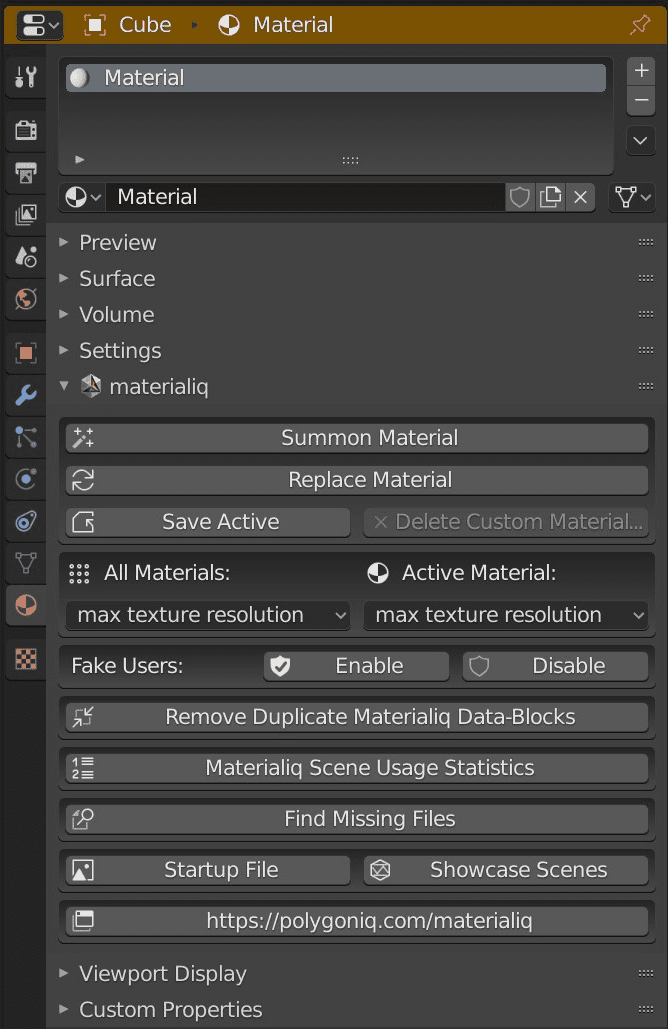
Info
Materialiq is the only polygoniq addon that is located in the Properties window. All other addons can be found in N panel on the right side of the 3D viewport window.
Summon Material¶
Assigns chosen material to the selected slot.
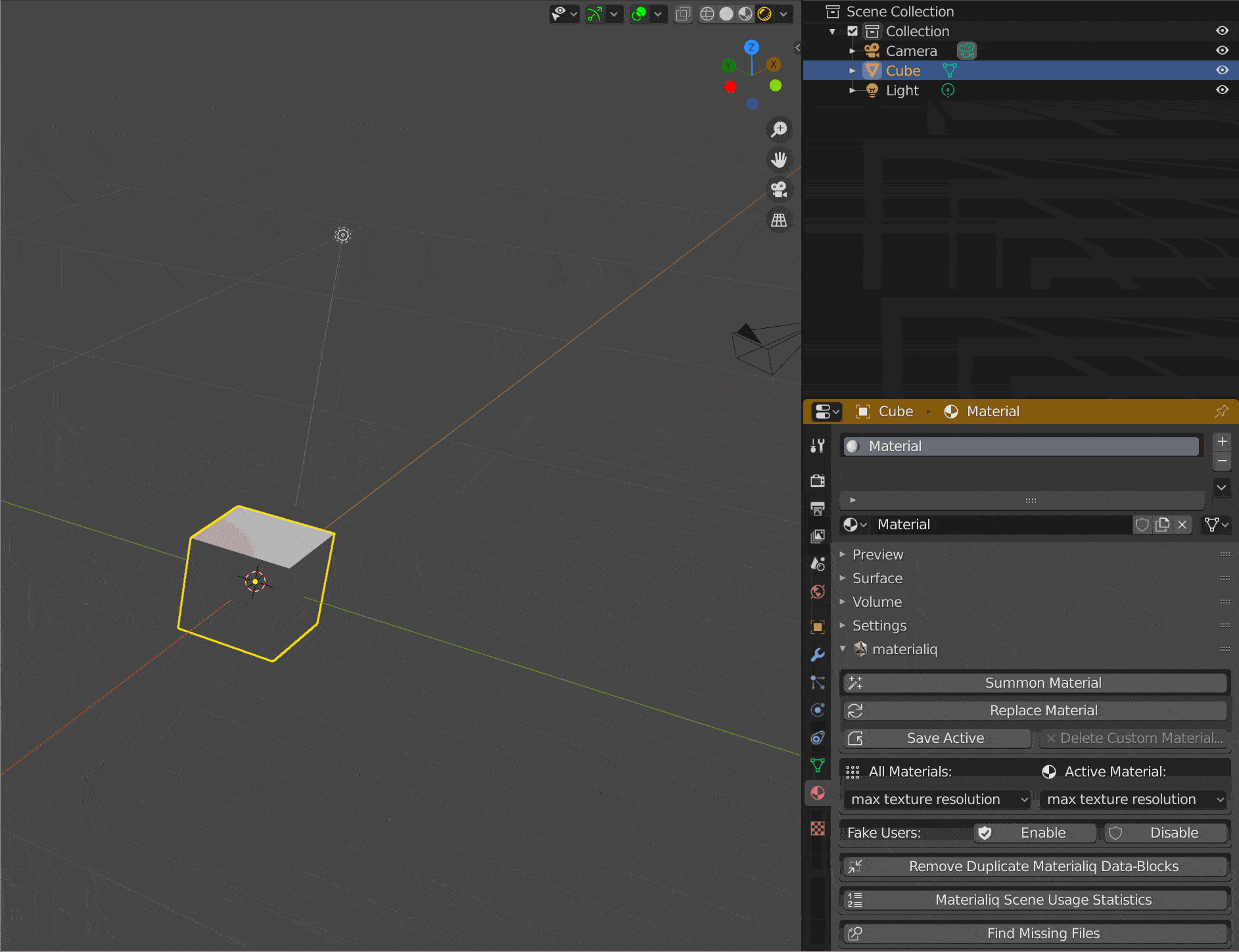
Assign material to specific faces
Add a new slot, summon material to this slot, go to Edit mode (e.g. press Tab), select desired faces and assign selected slot to these faces.
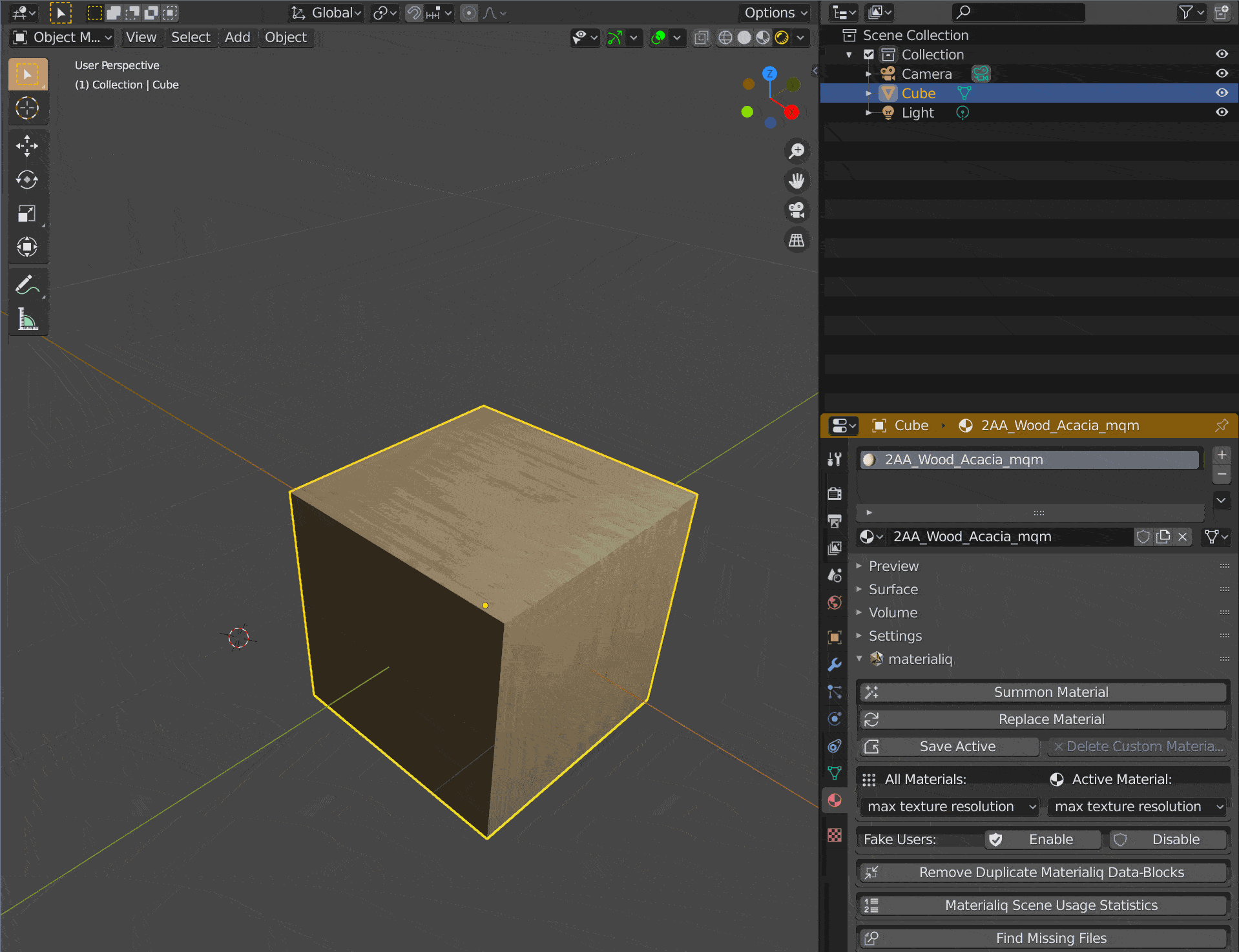
Replace Material¶
Replaces occurrences of one material with another.
- Only Selected - replaces materials only in selected objects
- Update Selection - selects affected objects and deselects unaffected
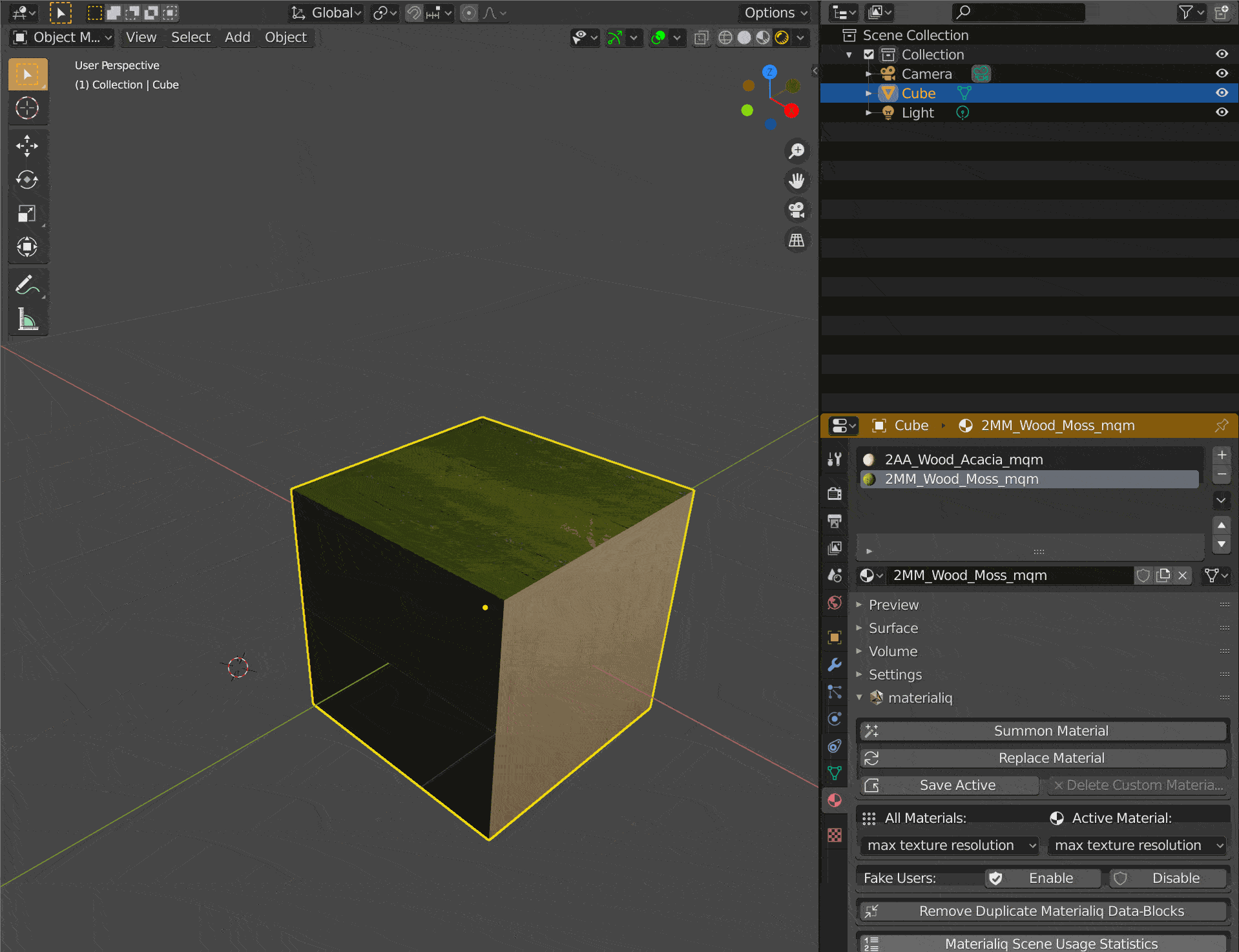
Save Active / Delete Custom Material Files¶
Saves/Deletes custom material, useful when you have adjusted material and you want to store it for usage in another project. More about material customization on the dedicated page.
Fake User Enable / Disable¶
Enables or disables fake user for all materials from materialiq addon. Fake user prevents unused materials from being deleted.
Remove Duplicate materialiq Data-Blocks¶
Removes all duplicate materials, node groups, textures and worlds that have suffix .001, .002, ... These duplicate materials, node groups, textures and worlds will be removed only if there exist corresponding data-blocks with the same name just without duplicate suffix. Then those original (without suffix) data-blocks will be used on all places of the duplicate data-blocks.
Materialiq Scene Usage Statistics¶
Basic statistics about usage of materialiq in the scene.

Find Missing Files¶
Runs Blender's find missing files on any materialiq asset in the scene, uses materialiq
installation path to find missing files. You can use this to fix paths when sharing blend files
across computers where the materialiq install path does not match.
Startup File¶
Opens small, medium or full startup file. Small and medium startup files contain some useful settings like enabled transparency, number of max light path bounces, etc. We are using these settings in production, so we thought you may find them interesting. Although, some of these settings may be set conservatively if you have a powerful computer.
Full startup file contains objects which combine two materials, use glass materials, or have some specific modifier stacks, ... We think you may find it useful to open and explore the file a bit.
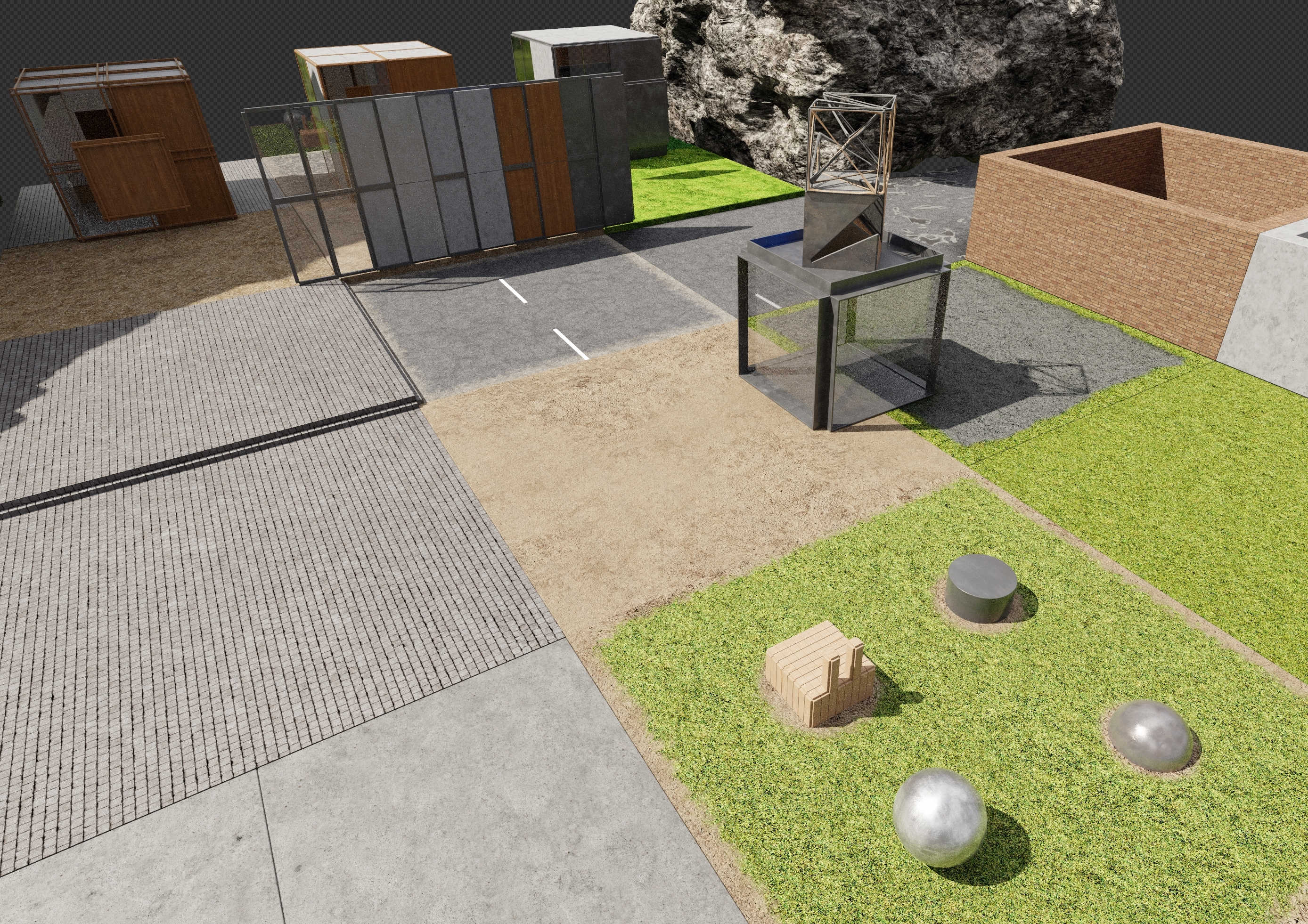
Showcase Scenes¶
Opens scene with all materials spawned on testing geometry. It can be useful for previewing materials.
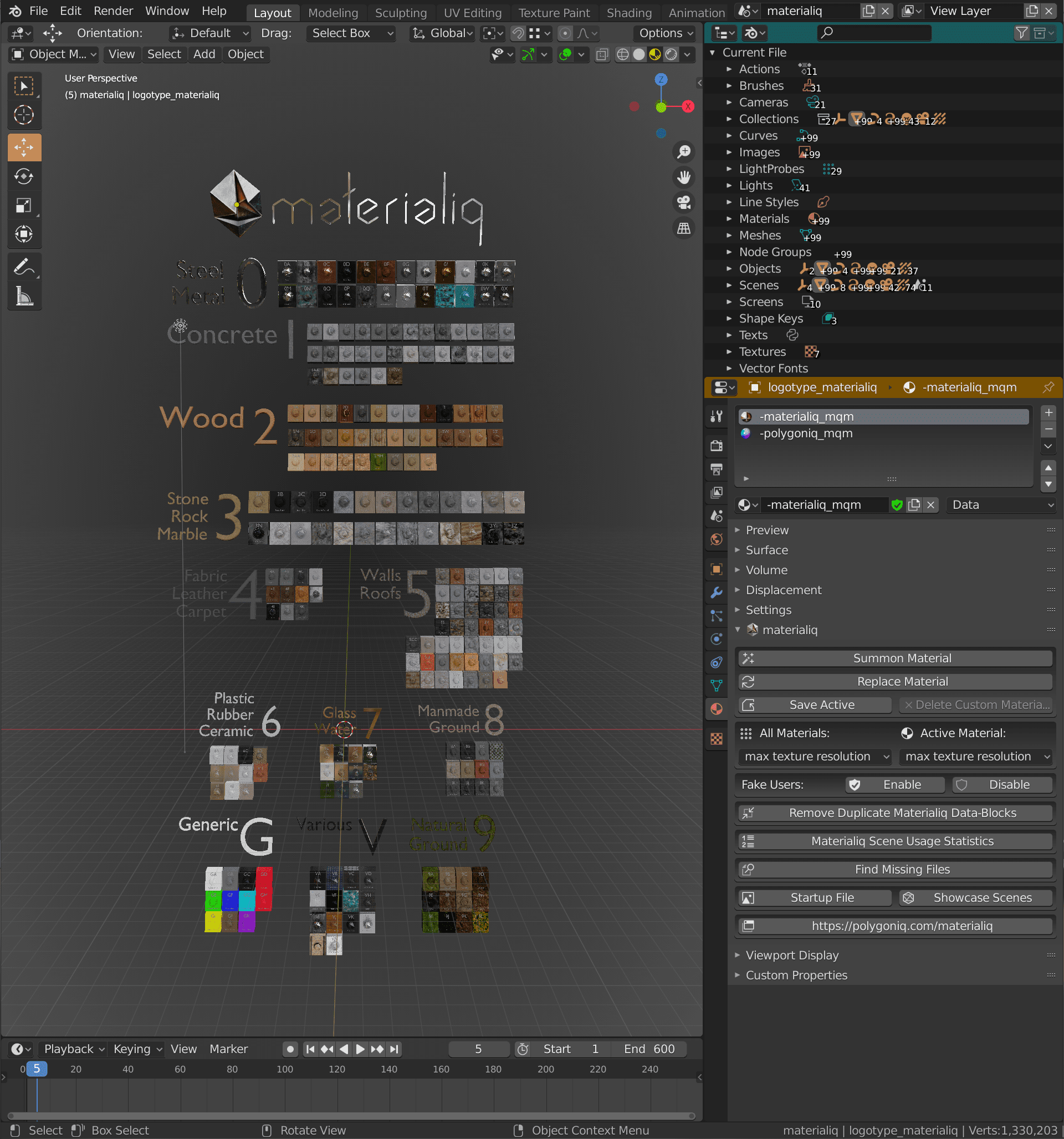
Tip
It is a good idea to have only a few materials visible before switching to Render View as it takes 14 GB of memory to render the entire library! You can select meshes with materials you want to inspect closely, press Shift+H to hide everything else and switch to Render View (Shift+Z) after that. To go back you press Z or Shift+Z to stop the rendered preview and then Alt+H to unhide all.
This described probably the most useful sequence of shortcuts in Blender when it comes to working on larger scenes. One additional shortcut useful in this scenario is the Render Border Shift+B to select a small area to render so that the noise cleans faster which in turn allows you to make decisions faster and have the UI more responsive if using GPUs for rendering. You can clear (reset) the render border with Ctrl+Alt+B.
Memory and Performance¶
It is a fact that large textures take up a lot of memory compared to geometry so to help with lowering the memory requirement you can easily swap texture resolutions of materialiq materials to use smaller textures. 2048x2048 takes 4x less and 1024x1024 takes even 16x less memory than 4096x4096.
To do so materialiq allows you to either change resolution of all materials or just the active material. Mostly it is good to change from 4096 to 2048 globally and then where there is a prominent material close to the camera, you can switch it back to 4096 locally while it is active.
In large scenes with many materials or for smaller resolution renders it is good to start at 1024. 512 is only really useful when distance to objects permits it or it is helpful to preview heavy scenes. Since it is 64x times smaller than 4096x4096 it loads very, very quickly and uses a small fraction of the memory